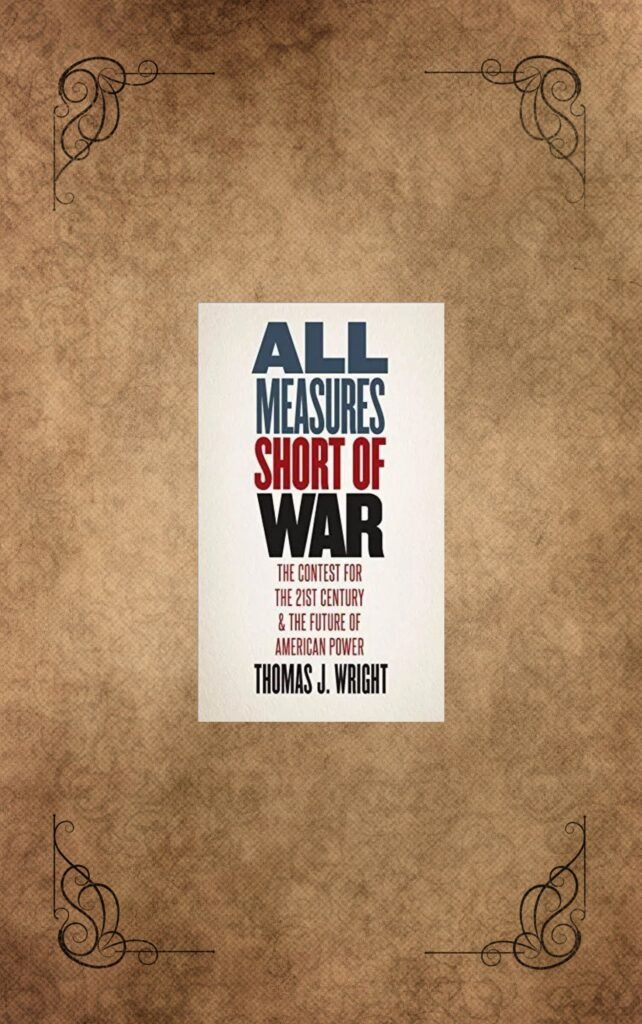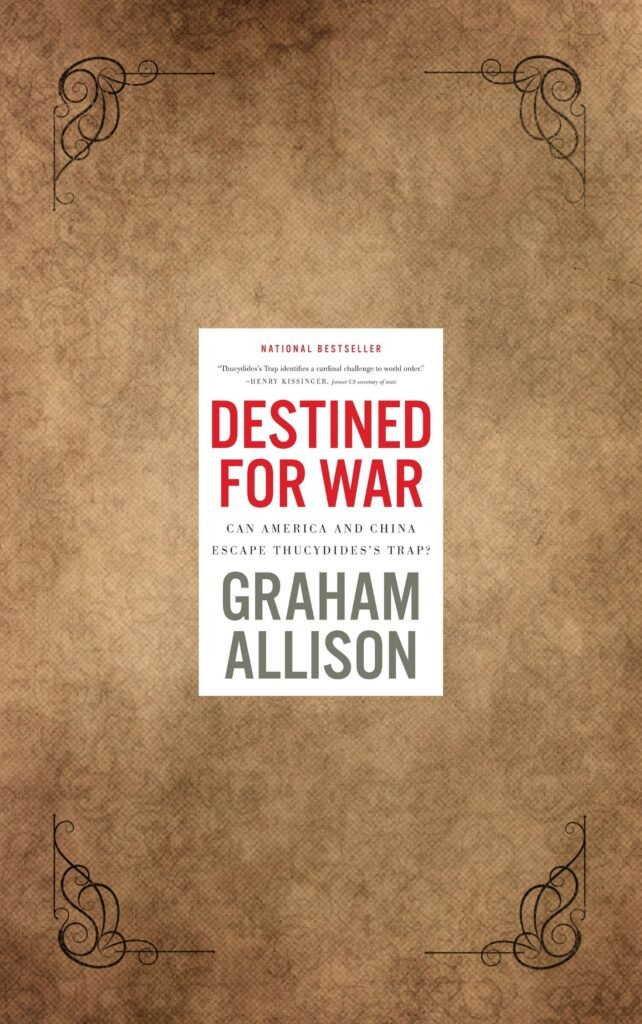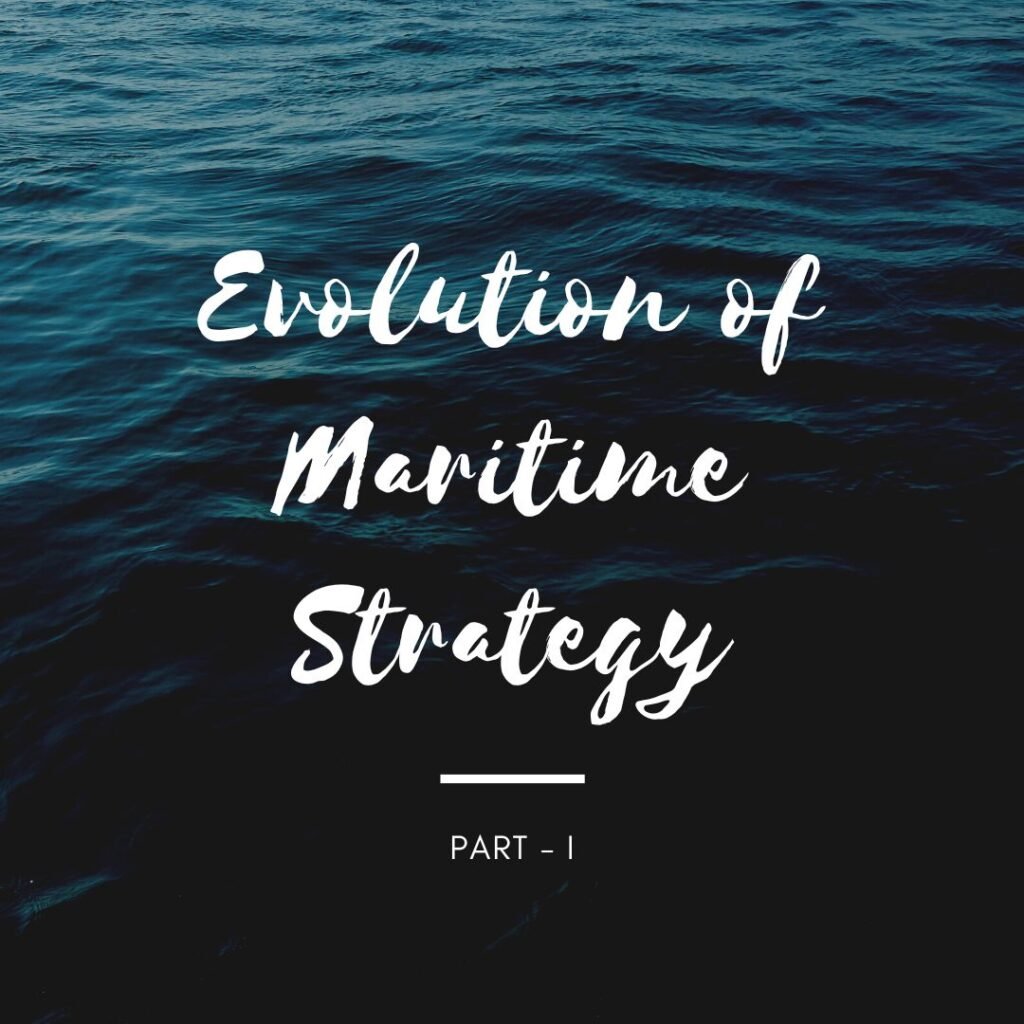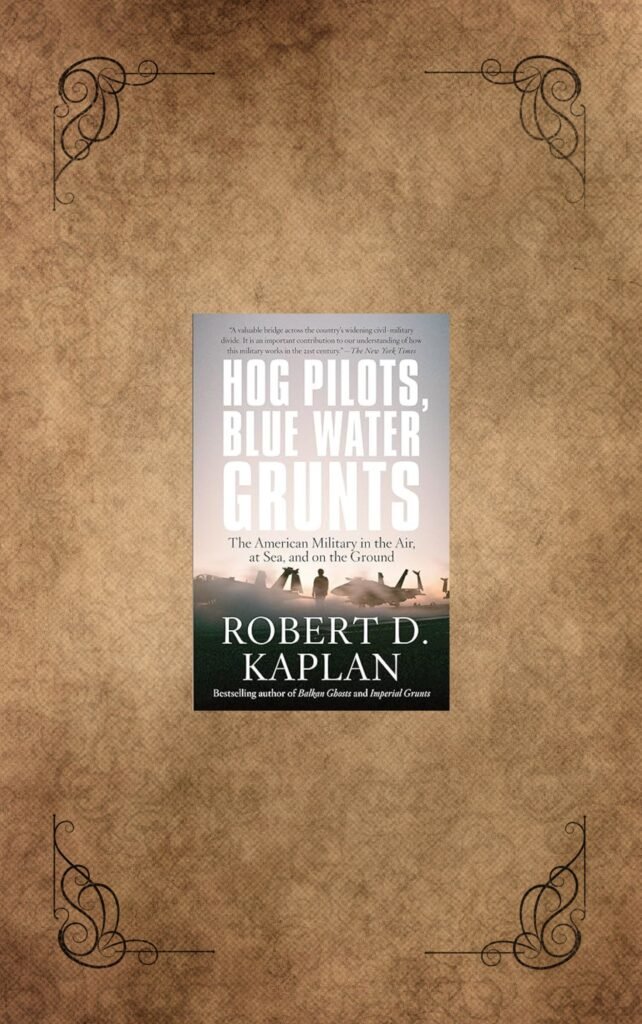Military Strategy and Its Formulation: As per Dr Milan Vego of U.S. Navy War College, the term “strategy” was first used by the ancient Greeks. In referring to forms and methods used by the “strategos” (stratós—army; agós—leader); the military commander, in carrying out his leadership tasks. In the ancient world, strategy pertained exclusively to the use of military sources of power. This article focuses on modern military strategy and its formulation.
What is Strategy?
According to the Oxford Dictionary, a strategy is “a plan designed to achieve a particular long-term aim”. People now use the word “strategy” in a variety of subjects. Such as business strategy, development strategy, growth strategy, defense strategy etc.
As war and increasingly in nuclear age deterrence or maintenance of peace is primarily our subject of interest; it will be apt to develop the understanding of strategy in that context albeit by no means strategy is applicable to war or peace alone.
International law differentiates between war and peace. In an age where nations now “wage peace” and prevent war by “preventive wars”, in an age of “phony wars”, “proxy wars”, “perpetual war for perpetual peace”, “cold war”, “no war no peace”, “Hybrid war or Grey-Hybrid conflict”; that distinction is significantly blurred.
As the level of practitioners’ rises from lower to higher rungs, from service specific to national levels, from strategy in any form to grand strategy, the scope enhances along with complexity, opportunity and threats; resultantly, wider range of elements of national power come into play.
For any entity or enterprise to succeed, strategy or strategies must see through all phases, otherwise success remains elusive, as Liddell Hart puts it, “grand strategy must always remember that peace follows war” hinting that strategy must encompass all aspects not merely the immediate requirement but on a larger canvas with certain timescale.
Military Strategy and its Formulation: Policy and Strategy Relationship
While contemporary era necessitate that militaries must think of strategies beyond the microscope of war; to understand the term strategy itself, war is a useful realm. Clausewitz establishes the primacy of politics over the military or any other element of national power in theory when he refers to war as a branch of political activity. Therefore, strategy is subservient to policy.
Policy defines the end state and establishes why it is important to achieve that end state. Strategy on the other hand is the art and science of developing and employing instruments of national power to achieve that end state. Unless one decides what to do and why to do it, one cannot embark on ways to do it. Theorists’, both civilian and military, express the same in differing terms yet with identical theme.
War is not an obligation; it is an occasional necessity for a political reason. If it does not serve that reason; it is useless. War not being a constant phenomenon or norm, albeit recurring one, implies that although what militaries prepare for may or may not occur, yet it will be a folly not to prepare and plan for it. The measures so adopted are what strategy is all about.
Military Strategy and its Formulation: Why Strategy is Essential?
Professor Frederick Lewis Schuman explains that nations engage in wars to secure, retain, or prevent the adversary from acquiring elements of power considered crucial for the future balance of military capability. Strategy must lead to that security, retention or prevention.
Yet it does not imply war is the only option or all strategies must be for war. War is only one of the options that strategy must encompass and cater for. Sun Tzu wrote, “If it is not in the interest of the state, do not act. If you cannot succeed, do not use troops. If you are not in danger do not fight”. Count Raimondo Montecuccoli, an Italian military commander, believed that one should never risk an engagement if one intends to proceed only defensively.
Both these statements seem pessimistic from an ordinary soldier’s perspective because he wants to fight and win. From leaders and more specifically from a strategists’ view, they have a different meaning altogether.
Sun Tzu clearly advocates the primacy of interest of the state followed by the determination of strategy that achieves or protects that interest in the best way possible, in modern terms cost-benefit outcomes or balancing risk against cost. Choose to engage, only when it is necessary and clearly beneficial or serves to achieve an advantage.
Similarly, Montecuccoli’s statement asserts that strategy should follow the purpose rather than defining it. Strategy therefore is a design to achieve the objective. Although not explicitly stated in this context, Corbett’s assertion that “War has proved to the hilt that victories have not only to be won but worked for” highlights the significance of strategy and its objectives.
Military Strategy and its Formulation: Theory of Strategy
American International Relations scholar and military historian, John Lewis Gaddis explains that, “Strategy is the calculated relation of ends and means”. He expresses that this is a universal statement applicable to any situation, including the military, where a specific “task” must be accomplished with available “resources.”
The adjective “calculated” means “deliberate” rather than accidental, inadvertent or fortunate connection between ends and means and there is some form of resistance involved.
Dr Gregory D. Foster, Professor of National Security Studies at NDU Washington, puts it more simply by asserting that strategy is “a plan of deploying capabilities to achieve policy objectives”. The plan therefore implies the method or ways used to achieve the end. Professor John Garnett, an international relations expert from UK asserts that, “it cannot be repeated too often that waging war is only one of the ways in which military power can be used to implement political goals. It is for this reason that strategy is much wider than the study of wars and military campaigns”.
In the exclusive military context; Field Marshal Helmuth von Moltke Sr. defined strategy as a practical adaptation of the means at a general’s disposal to attain the object in view. Strategy is defined in Joint Publication 1-02 as “the art and science of developing and employing instruments of national power in a synchronized and integrated fashion to achieve theatre, national, and/or multinational objectives”.
Military Strategy and its Formulation: Broad Contours
Study of theoretical work highlight some important aspects about strategy. Let us now examine what are the broader contours. First and foremost is that strategy serves policy, which is designed to achieve or maintain a particular objective or set of objectives or in operational art’s parlance – the ends. Policy therefore guides strategy; if it is in reverse, consequences can be detrimental.
It also implies that a strategy that is articulated to achieve a certain set of objectives may not be as useful to attain another set of objectives. Therefore, there is no one solution-fit all categories in strategy.
Further, there can be different approaches to the solution of any given issue. The choice has to be made; it has to be deliberate. Otherwise, events will dictate actions rather than actions influencing outcomes i.e. in essence strategy driving policy.
That choice is required because there is an opposition involved thus resistance exits and so do the risks. Policy may accept the risks based on the worth of the objectives involved; strategy therefore must be flexible enough to embrace those risks when required.
To execute a strategy, resources are required. Embracing risk means allowing stress on those resources, resultantly the economy of resources is affected thus the cost involved in achievement of an objective. Again, it is not the strategy which decides that what cost is acceptable; it is policy’s prerogative. While useful strategy will aim to minimize risks and costs; in practice it is seldom possible because a strategy that aims to minimize cost generally ends up taking higher risks.
Therefore “calculated relation” will remain in play but balance may not be possible always as resources influence strategy i.e. while strategy seeks to balance the ends and means; means themselves influence strategy.
While policy desires to reach the end of the tunnel; strategy must see beyond the tunnel. There is no meaning to success in achievement of a goal with everything else depleted to the core. Strategy always starts earlier and ends later than the achievement of objective. The job of strategy does not finish with the achievement of objective; objective achieved has to be maintained and a strategist must maintain resources at hand for it as no one wants to end up winning and then losing everything altogether.
That is why war is not a solution to every conflict. Sun Tzu’s dictum of death by thousand cuts may be sometimes a more useful approach than a decisive battle. Sometimes, strategy may aim to maintain peace or deter war at all costs within a framework of policy.
Lastly, strategy enables an entity or enterprise to find its worth within the state system and links its importance in the overall grand design.
Military Strategy and its Formulation: Strategy Structure
What are the structure and essential factors strategy formulation must consider? A good start can be found in the “process theory” which present analysis of how to structure and manage policy making process. Inferences therefore are useful for strategy formulation.
For a strategy to be successful, it should be able to first ensure that sufficient information is available and analyzed adequately. In the complex environment of strategy formulation availability, accuracy and wholesomeness of base knowledge will matter for the strategy to be holistic. In addition, methods of evaluation must cater different approaches of information analysis including scientific means.
Second important aspect for strategy making process is that it must facilitate the identification of major values and interests and ensure that objectives are guided by those values and interests. It should also assure that a wide range of options along with inherent risks are considered prior the determination of ultimate course of action. It should also analyze and provide careful consideration for each course of action.
Finally, it should be willing to accept that the strategy may not succeed and learn from that experience.
Military Strategy and its Formulation: Essential Factors
Strategy formulation process is also affected by many factors. To start with is the aspect of oversight. Who has that oversight? Who is the ultimate authority that approves that strategy? How and why, it was determined to make a particular strategy?
Next step is identification of stakeholders, their legal frameworks, their current policies and strategies. Third step is the analysis of how national interests are determined? Who determines them? What are the domestic political considerations? It is perhaps the single point of failure in strategy formulation, because national interests are often seen from the prism of own perspective, consensus is essential yet in most cases illusive.
Next is determination of facts and assumptions. What constraints and restraints are imposed such as resources like money or time? Are there any existing threats and opportunities? What is the national guidance for thrust lines in threat mitigation and exploitation of opportunities?
Another aspect is measures of effectiveness. What are the measures of effectiveness involved and how they were formulated? Are they premised on tangibility or are they open ended?
Next is what effects are desired? What are intended effects; including second and third order effects? Are effects within the limits of means available?
Next aspect is risk assessment. Assess how to evaluate risk. What can you anticipate? What cannot be anticipated and should therefore be assumed?
Lastly, determination of feedback mechanism; what mechanism is to be adopted? When the strategy will be put up for periodic review? When is the progress on strategy to be evaluated?
In Conclusion
Every security challenge occurs within a broader strategic situation. A clear, concise summary problem statement is essential. Strategist should identify the relevant factors essential to producing an accurate description of the security challenge at hand.
Determining a nation’s interests. Those fundamental, enduring conditions a state chooses to pursue is not the job of strategy, yet it must keep it in perspective in the art of possible.
Means employed can be military capabilities as well as all other resources. Each of the instruments of National Power has its own essential role. Consequently, in modern strategies ‘MIDFIELD’ (Military, Informational, Diplomatic, Financial, Intelligence, Economic, Law, and Development) is the basic construct of EoNP.
Strategist should consider what the proposed strategy is asking each instrument to do at any point in time and space. Strategists should take care to identify the right combination of instruments of National Power. Strategists frequently tend to adjust Means. Strategist must alter means as reframing occurs and an emergent strategy develops.
Strategic environment is dynamic and continuous change is inherent. Successful strategies may present new opportunities or require a new strategy to account for the conditions of success. Unforeseen changes in the strategic environment that may occur justify modification of some aspects of an existing strategy.
A properly formulated strategy constructs inherent flexibility and adaptability in its Ends, Ways, and Means. Cost-benefit analysis reinforces the criticality of interests at stake in the problem, the value of those interests and threats to those interests. Include the funding required to acquire, build, enable, protect, convert, achieve, or maintain something of strategic value.
Risks from the strategy are additional threats, costs, or otherwise undesired consequences caused by the strategy’s implementation.
No strategy is infallible. Strategist must adjust to accommodate the new reality. Strategist must revisit the analysis. So that to ensure the plan of action continues to rest on a comprehensive, objective and insightful appreciation.
Finally, strategy must be suitable, feasible and acceptable. Strategy is suitable if it can achieve the national interest. It is feasible if it is affordable in terms of cost-benefit. It is acceptable if it is practical and rational.
About the author.







One Response
sir its a very well written article … cleared my concepts alot … thanks